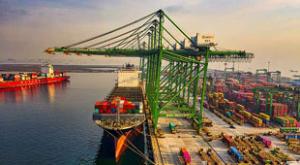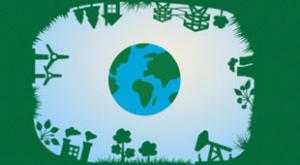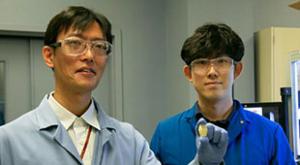All Features

Aaron Krol
As plastic pollution continues to mount, with growing risks to ecosystems and wildlife, manufacturers are beginning to make ambitious commitments to keep new plastics out of the environment. A growing number have signed onto the U.S. Plastics Pact, which pledges to make all plastic packaging…

Chip Reavley
The business challenges of the past few years—labor shortages, supply chain disruptions, and inflation—have accelerated the long-term trend toward automated packaging operations. All types of manufacturers and distributors, including food and beverage, pharmaceuticals, automotive, and e-commerce…

William A. Levinson
Environmental, social, and governance (ESG) is growing in popularity as a metric to guide investment decisions. What does ESG have to do with productivity, quality, or stakeholders, aka relevant interested parties? The answer is—with the exception of generally accepted practices for workplace…

Gleb Tsipursky
Shortly before the layoffs at Salesforce, Marc Benioff, co-founder and co-CEO of Salesforce, sent a companywide Slack message complaining about the low productivity of recent hires made during the pandemic and asked, “Are we not building tribal knowledge with new employees without an office culture…

Rick Gould
The World Economic Forum’s annual meeting last month saw the launch of new guidance to support the logistics industry on its journey to net-zero emissions. Davos attendees got a first glimpse into how companies can better understand and track their logistics emissions. Released by the Smart Freight…

Zeyi Yang
The year ahead is already shaping up to be a hard one for semiconductor businesses. Famously defined by cycles of soaring and dwindling demand, the chip industry was expected to see declining growth in 2022 as the demand for consumer electronics plateaus.
But concerns over the economic cycle—and…

Mark Hembree
When I started working from home in 1998, it wasn’t by choice. I was writing for a major record label that decided—in so many words—that I was like a painting that didn’t go with the furniture. (Fine. Know what you get when you play New Age music backward? New Age music.)
My panic-stricken…

Costas Xyloyiannis
During the early 2000s, I was a recent software engineering graduate. Along with a friend and fellow graduate, I landed some project work with a major pharmaceutical company. The CEO, who had just signed up to the U.N. Global Compact, needed to know how sustainable the company’s supply chain was.…

Bryan Christiansen
The U.S. utility industry, a cornerstone of modern infrastructure, is undergoing a significant transformation. Recent trends, primarily the shift toward renewable energy, are reflected in the sector’s changing statistics.
Strategic asset management in the utility sector is essential for…

Joshua Sadlock
Yup, that’s me in the photo. You’re probably wondering how I ended up hanging under a bridge over the Mississippi River. I’m a certified bridge safety inspector.
If you have questions after seeing people hanging under a bridge, in a basket suspended from the long arm of a truck, or have seen…

Bryan Christiansen
Every day, manufacturers rely on a large number of tools, machinery, and infrastructure to produce their goods. And while all of those assets help you generate profit, they are a significant expenditure—both in terms of the purchase cost and ongoing maintenance costs.
When deciding which…

Leeza Garber, Allison Jegla
In late spring 2022, the U.S. Securities and Exchange Commission (SEC) charged an elite investment adviser for “misstatements and omissions” about environmental, social, and governance (ESG) considerations related to its managed mutual funds. This same financial firm has also faced myriad…

Matthew Inniger
The inability to gather good data has challenged many food manufacturers for decades. But not anymore. As sensor technology has improved, and technology platforms have become more accessible and affordable to small and medium-sized manufacturers, the food industry is poised for transformation. Food…

Ula Chrobak
Thirty miles east of Reno, Nevada, past dusty hills patched with muted blue sage and the occasional injury-lawyer billboard, a large concrete structure rises prominently in the desert landscape. When fully constructed, it will be a pilot for a business that entrepreneurs envision as a major facet…

Kevin Kanimyar
Amidst the rise of conscious consumerism, corporate social responsibility (CSR) programs are fast becoming an essential part of any business. With about $20 billion spent every year by Fortune 500 companies alone, businesses around the world are working to integrate CSR programs into their business…

Jennifer Lauren Lee
As mechanical objects, gears have been around for so long that people generally take them for granted. But gears are sophisticated parts that play a vital role in cars, airplanes, construction and mining equipment, food processing, clock making, and more. Companies are still trying to make them…

Abdul Salam
Water is the most essential resource for life, for both humans and the crops we consume. Around the world, agriculture accounts for 70 percent of all freshwater use.
I study computers and information technology in the Purdue Polytechnic Institute, and direct Purdue’s Environmental Networking…

Seb Murray
In 1924, a cartel of light bulb manufacturers including General Electric and Philips agreed to artificially limit the lifespan of their products to about 1,000 hours—down from 2,500. The scandal, revealed decades later, came to epitomize the linear consumption model of making, consuming, and then…

Sarah Murray
John Foye remembers what sparked his passion for finding solutions to climate change. Backpacking in Utah’s Uinta Mountains with high school friends one day, they came across a patch of forest that had been clear-cut. While deforestation was not a problem in Utah, the sight of an area almost…

Quality Digest
One question led the founders of Nemo’s Garden, a subsea farming platform, to embark on its mission to take agriculture beneath the waves and bring better harvests to market: “Seventy percent of the planet is covered by water. Why don't we try to use part of the ocean to make more food, in a better…

Otto de Graaf
Despite the urgency of the climate crisis, and smart tech that enables the transition toward the factory of the future, for many manufacturers sustainability still feels like an afterthought rather than a priority. Certainly, sustainability may require big changes in strategy, processes, technology…

Anisur Rahman, Arif Arifuzzaman, Edgar Lara-Curzio, Tomonori Saito, Sungjin Kim
Researchers at the U.S. Dept. of Energy’s Oak Ridge National Laboratory (ONRL) have developed an upcycling approach that adds value to discarded plastics for reuse in additive manufacturing, or 3D printing. The readily adoptable, scalable method introduces a closed-loop strategy that could globally…

Rick Gould
As the world enters the third year of the Covid-19 pandemic, the climate crisis remains the biggest long-term threat facing humanity, according to the Global Risks Report 2022. Extreme weather due to climate change is seen as the second most serious short-term risk, with biodiversity loss coming in…

Luk Van Wassenhove
Labels such as “sustainable,” “eco-friendly,” and “green” have long been an easy sell. “Circular economy” joined their ranks when it debuted on the world stage at the World Economic Forum 2012. Even though related concepts have been discussed as early as in the 1970s, claims by the consulting world…

Emily Newton
There’s no better time than now. As a species, we need to mitigate the effect we have on our planet. There are many ways to do this—namely, through green and eco-friendly initiatives—but one sector is having the biggest impact of all: the industrial and manufacturing sector. In the 2010s, the…